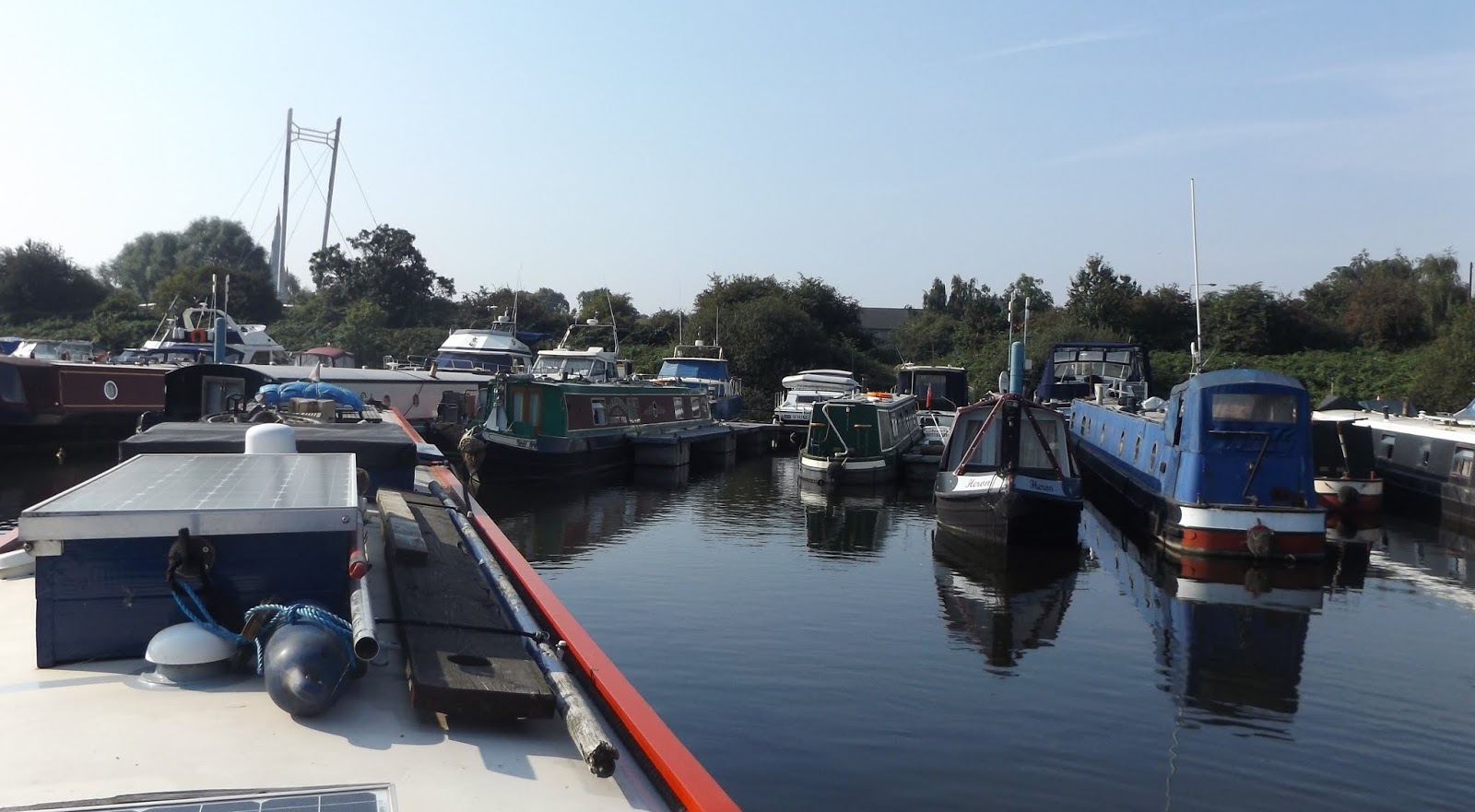We left the Hazleford moorings at about half-nine yesterday, straight into the lock, and were back out again 15 minutes later.

These lengthy mooring pontoons have been open for a couple of years now, and certainly seem to have been a good investment, with pretty well 100% occupancy.

An Egyptian geese family keeps a wary eye on us as we cruise past.

It’s 4¾ miles from Hazleford to Gunthorpe Lock which took us a steady 80 minutes, averaging around 4mph against the flow.
Waiting at Gunthorpe Lock for the green light.

There was no point in going any faster, we were still tying up on the mooring pontoon above the lock at half-eleven.

By mid-afternoon the fine, bright weather had given way to heavy clouds and rain, on and off for most of the rest of the day.
But this morning dawned fine again, but considerably cooler than it has been.
Another half-nine start and we were heading for Gunthorpe Bridge, carrying the A6097 Lowdham Road.

This is the only road crossing of the river between Nottingham and Newark, and didn’t exist before 1875. A new toll bridge, financed by a shares issued by The Gunthorpe Bridge Company opened at this time, replacing a ferry.
By 1925 modern commercial traffic was unable to use the 6-ton weight limit span. The Nottinghamshire County Council bought out the original company, built the new bridge we have today and demolished the earlier one.

The parapet sports the now-obsolete coat of arms of the Nottinghamshire County Council from when it was built.

Corrugated river as we head into the brisk breeze.

A 4½ mile cruise brought us to Stoke Lock, ready and waiting for us after a call to the lockie.
Looking back down the wide reach to Burton Joyce.

These anglers don’t need fancy tackle and bait, just an awful lot of patience!


Above the lock we pulled in for five minutes on the pleasant moorings for Meg to have a comfort break, then pushed on, under Ratcliffe Railway Bridge and past the decaying loading wharves at Colwick Oil Terminal.
Ratcliffe Railway Bridge.


The industrial suburbs of Nottingham start to make their appearance as we head up the last couple of miles to Holme Lock.

We had to wait for this one, I’d spoken to the lockie while we were 20 minutes out and he suggested that we “throw another log on” and he’d hold the lock for us. But I told him to go ahead and send the boats already in the lock away, and we’d wait for the next penning up. So I slowed down to make sure we didn’t have too long to wait.
Heading into the holding mooring, disturbing the ducks relaxing in the sunshine.

We only had about 20 minutes to wait before a downstream boat emerged from the now-empty lock and it was our turn to go up.
It takes a while to rise up to the level of the river above, this lock is around twice the depth of those further downstream. But we were out and tied up by twenty past twelve.
It turned a bit cloudier this afternoon, but we’ve not had any rain yet. On to Nottingham tomorrow.
Locks 4, miles 12½ (2 days)


















































